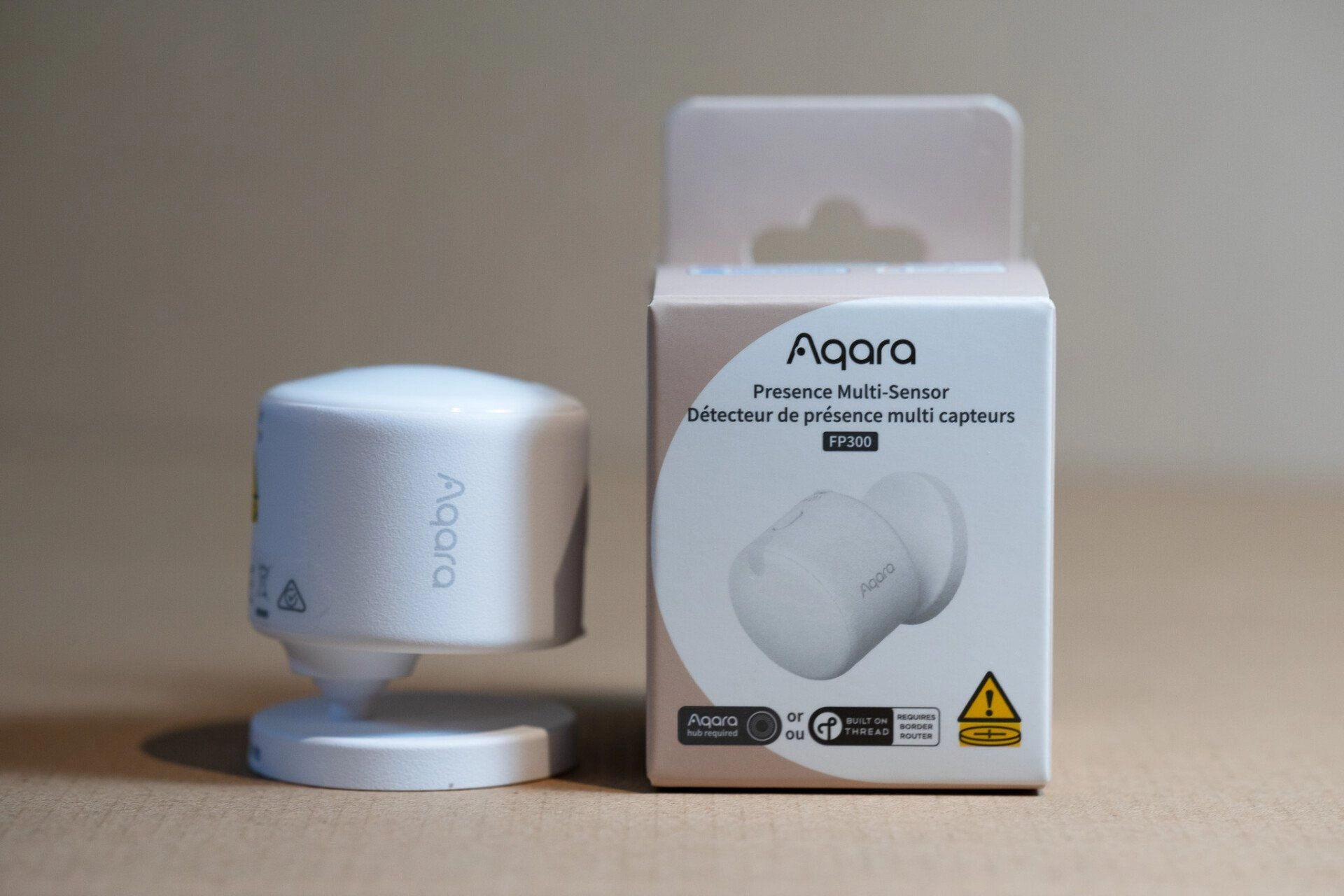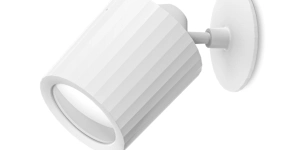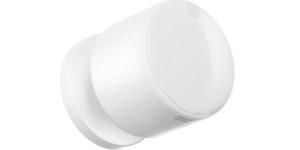Aqara has a long history of making premium presence sensors, including some of the most well-known models on the market, like the Presence Sensor FP2 with its fancy zone detection and sleep monitoring. But a drawback of these highly accurate, high-frequency sensors is that they rely heavily on a constant power supply, which makes it hard to fit them in spaces without an outlet nearby.
Well, now comes the battery-powered option, the FP300.
I have been using the device for a month ahead of its official release. It is stunning for its base experience, even while I still miss all the fancy features its brother models have. Considering the achievement of overcoming the high power consumption of radar tech – along with Matter connectivity – in such a compact, battery-powered body, the FP300 is a new star.
TL;DR
Fors:
-
True, battery-powered mmWave presence detection
-
4-in-1 sensor: occupancy, temperature, humidity, and light
-
Solid Matter-over-Thread connectivity
- Zigbee/Thread dual connectivity
-
Accurate detection
-
Uses standard Matter clusters for compatibility
-
Long expected battery life
Againsts:
-
Occasional occupancy status loss
-
Minimum 10-second hold time
-
Lacks advanced features of FP2 (no zone detection, fall detection)
-
Advanced configuration (like detection range) is Zigbee-only.
Refreshed design and easy setup
Unlike the previous motion sensors and presence sensors, the new FP300 has a brand-new design, which is rare for Aqara, a company that usually uses the same product design for generations.

The FP300 has a slightly larger body than the Motion and Light Sensor P2 and comes with a more solid material. It has a stiff, matte finish that feels more durable and less like a toy. The stand’s joint seems to be more reliable, though it takes more force to adjust. It is also no longer centered, which conveniently makes it easier to point the sensor at a larger angle for detection.
The FP300 inherits the magnetic stand design, making it easy to install on a wall or any metal surface. I used a 3M sticker to adhere the metal slide to the wall, but you can also use the included screw kit for a permanent fixation.
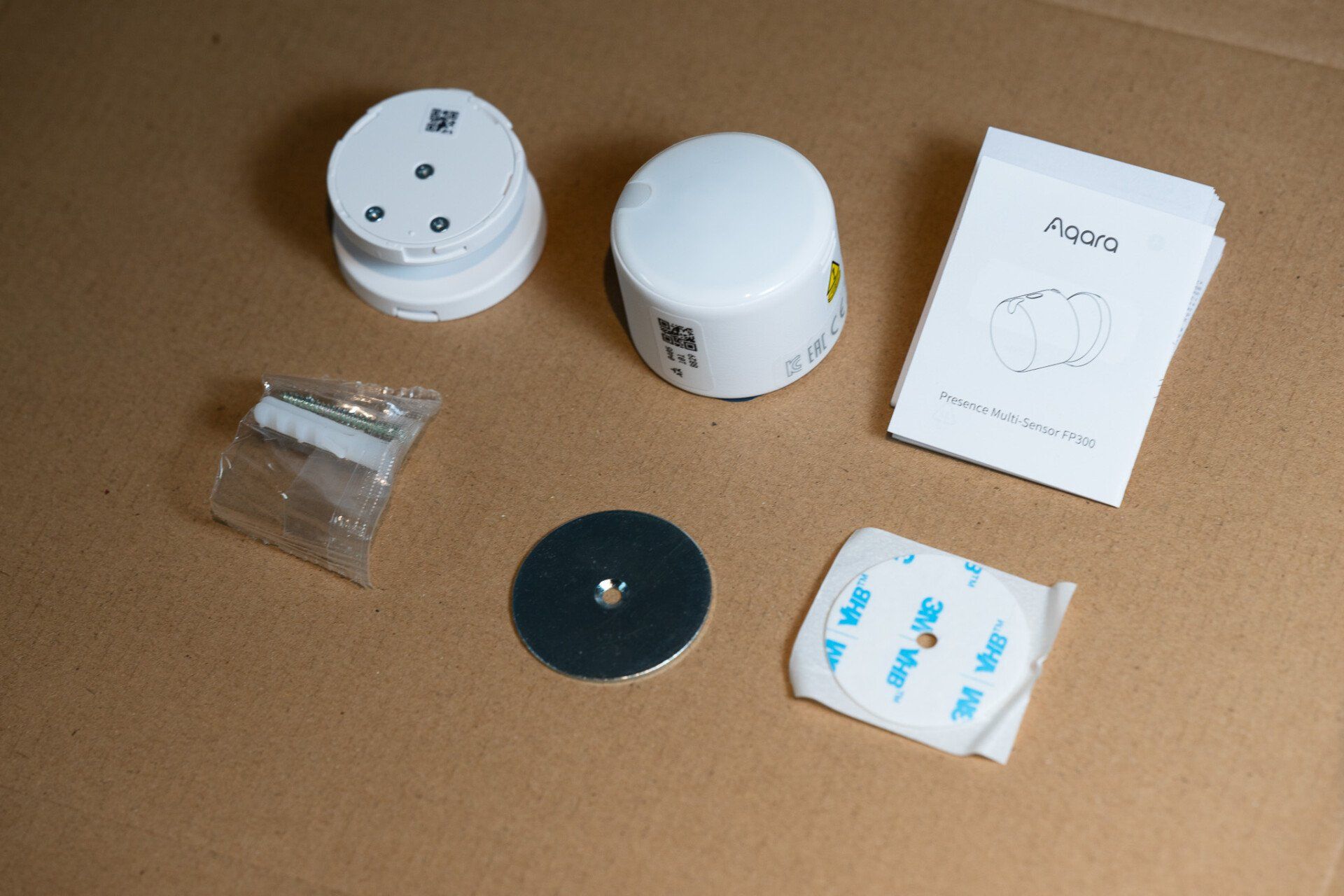
Hardware setup is also easy; once you remove the insulating sheet, the FP300 blinks and is ready to pair with Matter by default. I tried the sensor with the Aqara app, Apple Home, and Home Assistant. The setup and multi-admin (sharing with additional ecosystems) is fast, though the initial success rate was only moderate.
I have to say, Aqara still has yet to improve the setup flow in its app, which I complained about in my Hub M100 review. Sometimes you have to tap multiple times and input pairing codes twice, which is annoying.

Speaking of the setup code, Aqara finally changed the design to add a full QR code on the device itself, instead of the tiny numeric codes only found on its P2 Matter sensors. This is a convenient change, as you no longer need to access the manual in the box.
Multi-functional and solid performance
The presence sensor packs essentials into one device. The composed occupancy sensor (PIR + radar) that offers a 120-degree, 6 meters large detection range. It also has a relative humidity sensor, a temperature sensor, and a light sensor. This makes the sensor a great option for room climate monitoring as well, and a good source for thermostat automations, saving the extra budget for a separate temperature and humidity sensor.
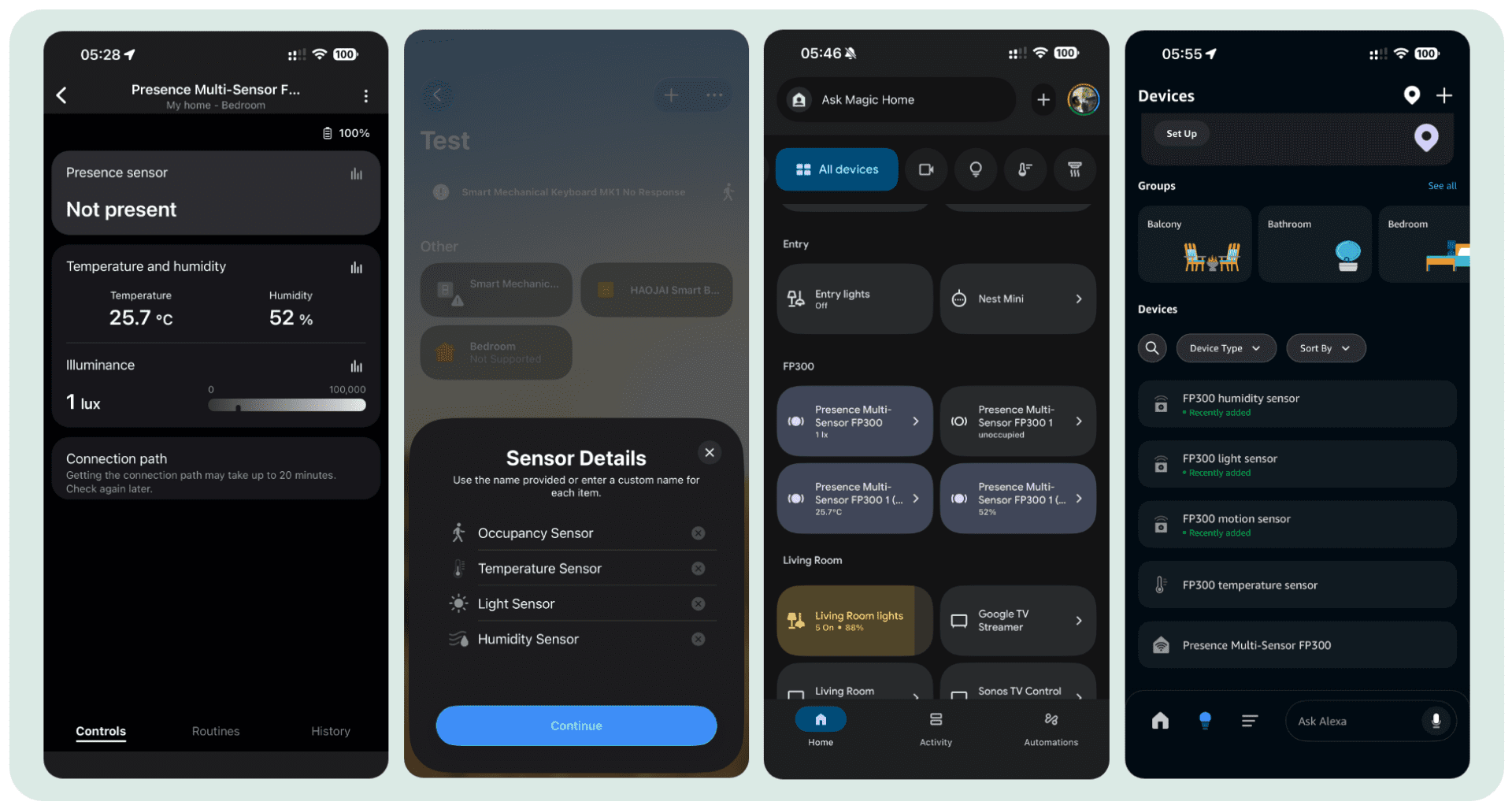
The sensor’s Matter-over-Thread connectivity has been solid in my testing, with quick response times and stable connections. The responsiveness is moderate at the default “medium” level, but this can be adjusted. To ensure maximum compatibility, Aqara has implemented these settings using standard Matter clusters.
The hold time is exposed via the standard “HoldTime” attribute, and the sensitivity level is exposed using the “BooleanStateConfiguration” cluster. In the Aqara app, this is called “Sensitivity,” while Home Assistant will soon release support for this cluster, hopefully in its 2025.12 version.

What surprised me most is that the sensor barely has a mis-trigger or ghost detection, which happens a lot in some rivals. This is a huge win. However, I found its default sensitivity sometimes has trouble maintaining the occupancy status. The adjustable “Hold-time” can optimize the issue, but it won’t really eliminate the situation. I suspect this is due to the auto-learning feature; my room has a relatively loud background “noise” that causes inference, so the sensor may be lifting its detection threshold too much to compensate.
This results in a completely different tuning strategy compared with the Lafaer Presence Sensor LWR01 I previously tested, which was way too sensitive.
The FP300 is powered by two CR2450 coin batteries. The battery life is hard to measure, as it has remained at 100% since I set it up a month ago. I would probably expect it to have a two-year battery life, similar to the Motion and Light Sensor P2.
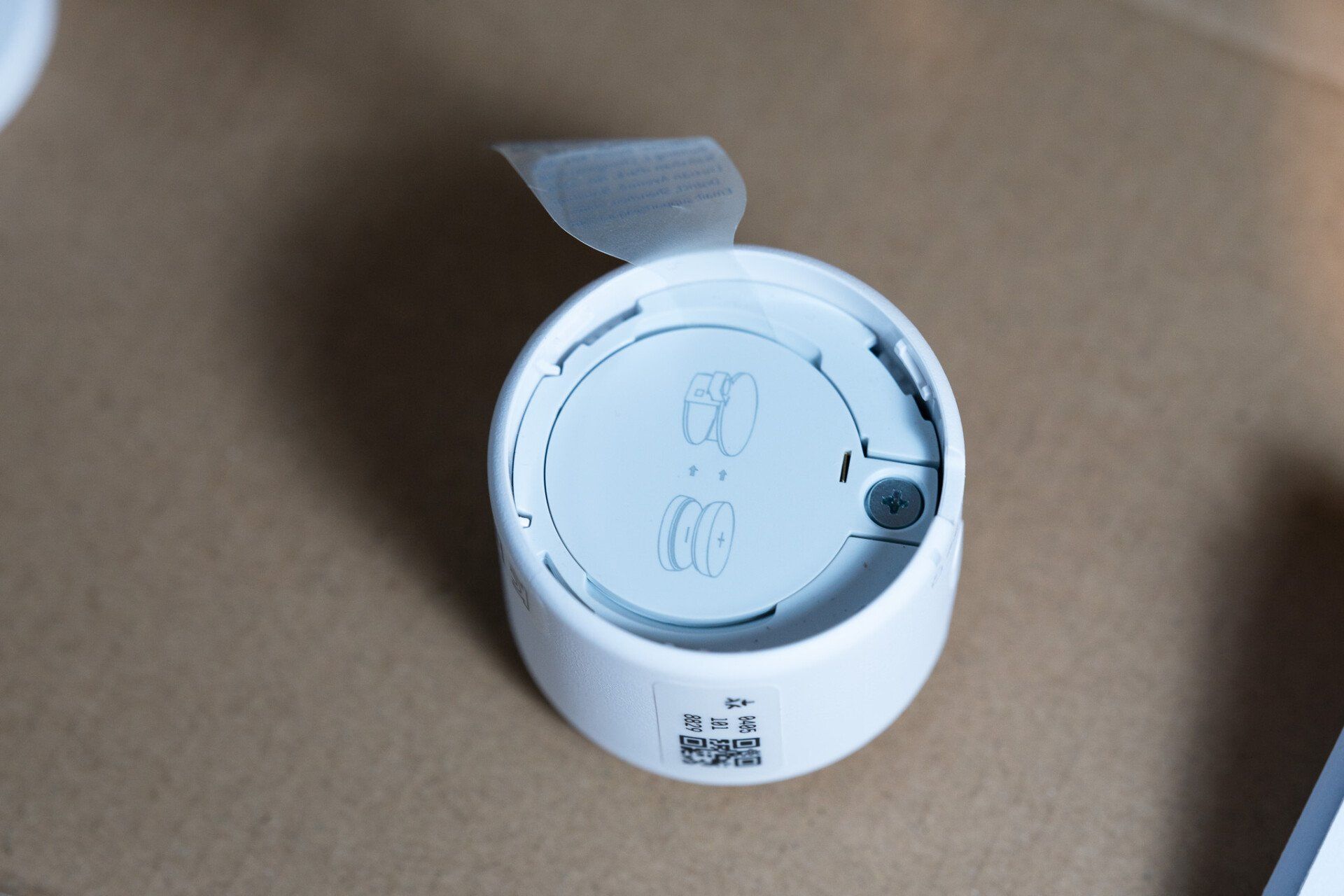
The sensor can also work in Zigbee mode. It’s important to note that, like many of Aqara's dual-mode devices, some advanced configurations are only available when using Zigbee with an Aqara hub. In Matter mode, you cannot access settings for detection mode or range adjustment, enable or disable the individual light, temperature, and humidity sensors, or adjust their reporting frequency. For Matter mode, Aqara claims the AI learning is done automatically without manual access.
FP300 vs. FP2: the battery-powered compromise
I still miss some features from the powered FP2, especially the zone detection. I don’t think the FP300 can perform those tasks, as it’s likely using a lower-frequency radar to save power instead of the 60Ghz chip in the FP2. Not to mention advanced features like fall detection and sleep monitoring.
There is also a small limitation for the on-hold time, whose minimum value is 10 seconds. You may not get the same instant light on/off experience you get with an FP2, but this is an acceptable compromise for a battery-powered device.
Well, here comes another thing. It does not provide an option to hard-wire the sensor, which would have been nice to let it run at full potential without battery worries. This makes it clear that the FP300 has a very specific target use case, likely to reduce its final price.
Final thought
The FP300 is a great upgrade if you are a Matter home builder coming from the previous Aqara Motion and Light Sensor P2. It exceeds my basic expectations for a presence sensor.
For a basic use case like toggling lights, it is sufficient, but you need to take some time to find a perfect spot to optimize its performance and accuracy, unlike traditional PIR motion sensors. The addition of temperature and humidity sensors is a major plus on top of the long battery life and solid build. I would say it is a good value sensor.
Aqara is also a long-term runner, one that provides Matter updates from time to time, which makes the product future-proof. You aren't stuck with lame and buggy firmware forever.
However, you need to balance your need. For a higher budget, the non-Matter FP2 offers far more. And for basic motion detection, a plain PIR sensor with a longer on-hold time can simulate a presence sensor. My recommendation is this: use the FP300 for small-to-mid-sized rooms. Use cheaper motion sensors like the P2 for cabinets and closets, and utilize the advanced zone detection of the powered FP2 for large, complex rooms.
The Aqara FP300 presence sensor is now available globally through Aqara’s official retailers and on Amazon. It is priced at $49.99 in the US market and 49.99 euro in European markets. There are two versions available, PS-S04E and PS-S04D, with the latter one including a metal plate and screw kit.
